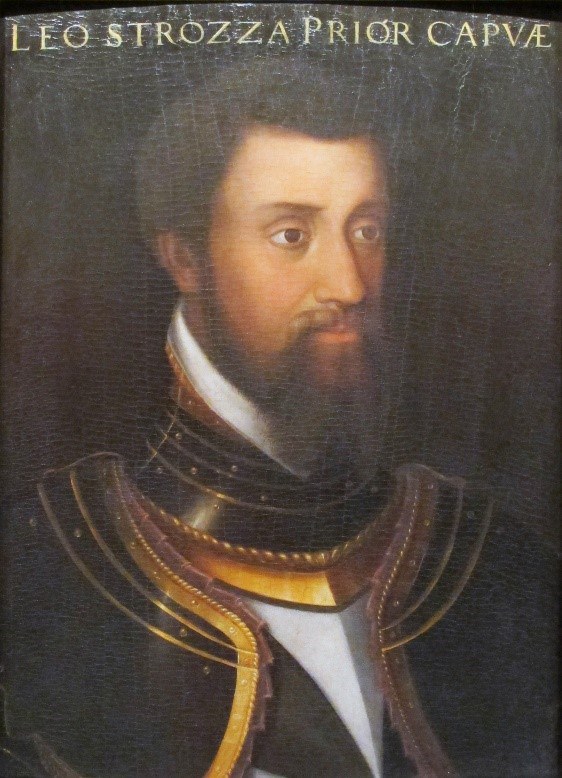Siege of St Andrews
Chapter 2 : Siege
Early in the morning of 29th May 1546, dressed as workman and having waited for the departure of Marion Ogilvy, the lady with whom Beaton lived, despite his supposed clerical celibacy, one group entered the castle and lowered the drawbridge. The porter was their first victim, as he recognised one of the conspirators as an enemy of the Cardinal and tried to raise the alarm. One hundred and fifty of the castle inmates were permitted to depart.
Beaton tried to escape by the postern gate, but found it guarded. He then barricaded himself in his rooms. The assassins threatened to set fire to the door. Beaton opened it. He cited his priesthood in an attempt to avert the inevitable, but was repeatedly stabbed, and his body hung from the castle walls. The corpse was then salted and left in one of the towers for nine months.
On 11th June, the Scots Estates at Stirling issued a proclamation against giving any aid to the Castilians, who were summoned to answer for their crimes. Unsurprisingly, they refused, and barricaded themselves in.
Governor Arran, whilst probably not that sorry to see the end of his rival, could not be seen to condone the assassination of Scotland’s primate, and brought a force of French troops to besiege the castle. He was hampered by his son being held within the castle – the young Hamilton had been being tutored by Beaton.
The siege was by no means rigorous. The Castilians, as the group became known, were joined by a Protestant sympathisers, including John Knox, who entered the castle, together with his pupils, sons of some of the lairds of Lothian. During this period, Knox began his career as a preacher of the Reformed Faith, his eloquence converting many in the town of St Andrews. For the longer term, the Castilians hoped for rescue from the English and smuggled messages out, requesting aid. One of them, Henry Balnaves, sent a request for money to buy stores to the English government, requesting that French coins be sent in, as if they used English coin, the origin of the funds would be exposed.
Arran, ineffectual at the best of times, turned towards the French alliance, and stepped up the siege. Mines were dug, and guns hauled up, whilst the Castilians dug counter-mines, refused terms for surrender, and kept their hands firmly on Arran’s son. An offer of a full pardon for delivery of Arran’s son and the castle, with Blackness Castle to be held as a pledge in exchange, was refused, so the siege was stepped up.
On 19th December 1547, the Scots Privy Council, which included Arran, Marie of Guise, the Catholic Earl of Huntley and the other nobility, both Catholic and Protestant, concluded that, rather than allow the siege to be a cover for further interference by Henry VIII, terms should be sought with the Castilians.
In December, an agreement was reached, whereby the Castilians would request absolution from the Pope for the murder of the Cardinal, and, once it had been granted, would be allowed to make reasonable terms for surrender. There is no likelihood that either side was genuine in its negotiation. The idea that Knox and his fellows would have wanted Papal absolution was unlikely in the extreme – especially as Balnaves had already sent a request to Henry VIII to block any absolution, by asking the Emperor Charles to put pressure on the Pope to refuse it. The request was just a means of prolonging the siege in the hopes of English financial or military help.
Within a couple of days of the agreement the Castilians had made with Arran, Henry VIII requested the Governor to desist from the siege, as the Castilians ‘having always shown themselves glad to advance the marriage between the Prince our son and your mistress, have our promise of help and now need it’ If the siege were not relaxed, he would send military aid.
Before the English could intervene decisively, in January 1547, Henry VIII died. Although the Duke of Somerset, who became Lord Protector to the minor, Edward VI, was later to pursue an aggressive policy in Scotland, he did not send military aid to the Castilians.
Astonishingly, Papal absolution was delivered in April 1547. The Castilians ignored it, and the agreement of the previous December, and continued to hold out. But there had also been a change of control in France, with the death of François I and the accession of Henri II, who was on excellent terms with Marie of Guise, and eager to effect the marriage between the young Queen Mary, and his son, the Dauphin François. Henri was willing to take a much more active role in Scots affairs.
In late June or early July 1547, fifteen French ships arrived, under the command of Leone Strozzi, cousin of the new French queen, Catherine de’ Medici. They called on the Castilians to surrender, and began a bombardment from the sea, that was initially ineffectual. After some delay, to allow for Arran to reach the town, canon were placed on the roof of the abbey and the university chapel and trained on the castle, which surrendered within a few hours. The Castilians were taken away, and Arran’s son released, although he had become a committed Protestant during his time with Knox and the others.
Surprisingly, the Castilians were not hanged. Instead, they were taken to France. The lower ranks, including Knox, were put into the galleys, where, although life was grim, they were no worse off than the other oarsmen, except they could not leave. They remained there until the peace treaty between France, England and Scotland, at which time they were released.
The English, who had been behind with news of the French attack, sent a fleet, but too late. The loss of St Andrews galvanised the English into a more aggressive stance that resulted in the Battle of Pinkie.




